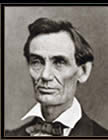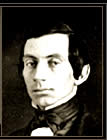Top Selling Presidential Coin: Donald J. Trump
There are many theories out there but following are the most popular. . At the end I select the one that makes most sense to me; but you decide:
1. The likeness of President Lincoln on the penny is an adaption of a plaque executed by Victor David Brenner, an outstanding portraitist and sculptor. President Theodore Roosevelt was so impressed with Mr. Brenner’s design of a Lincoln plaque that he recommended to the Secretary of the Treasury that the design be placed on a coin to be issued in the Lincoln Centennial Year, 1909.
2. The other presidents are turning their back on Lincoln because he freed the slaves.
3. The direction that Lincoln faces on the cent was not mandated — this was simply the choice of the designer.
4. It is because he died in office. He is shown as looking back rather than forward because we don’t know what his future would have been, or the future of the country if he had lived and served out his second term. As said in his eulogy, “Now he belongs to the ages.”
5. Because he turned his back on his country men. He allowed this country to be divided and go to war with it’s self.
6. He faces right because he was a Republican.
7. He was assassinated so he faces the opposite way of the other presidents. (This obviously ignores the fact that Kennedy on the half dollar faces left)
8. Lincoln’s Best Side: Because he has a big scare on the left side of his face.
I chose # 8. Read more about Lincoln’s Best side:
…Fracture of Skull and Injury of Brain in Boyhood
All of these differences in facial muscle and bone development, like the weakened functioning of the left ocular and facial muscles in particular, indicated to me that Lincoln had suffered a serious injury of his brain in childhood. The sharp depression in the forehead above the left eye with a definitely palpable edge, in the life masks, shows where his skull had been fractured, and the permanent differences in the nervous tone of the ocular and facial muscles of the two sides indicate that his brain was then permanently injured.
…Lincoln was also struck on the head with a club in a fight with Negro marauders while taking a flatboat down the Mississippi, when either 19 or 22. This blow, he said, left a permanent scar.
…The kick on the forehead over the left eye evidently fractured the skull at the point of impact and must have violently snapped the head and neck backward. The size and depth of the depression is evidence of its severity. It is most likely that a subdural hemorrhage of considerable size developed here, besides points of hemorrhage elsewhere. The left frontal lobe was certainly damaged, which, in a right-handed, right-eyed person, would have modifying after-effects on his personality, which will be considered later.
The second photo was sometimes mistaken for Lincoln.
For information on Lincoln’s injuries visit: http://www.lincolnportrait.com/common_sense_fracture.asp Note:
Other US coins with left-facing heads.
Buffalo Nickel………………Indian faces to his left.
Barber Dime……………….Liberty faces to her left.
Barber Quarter…………..Liberty faces to her left.
Barber Half Dollar………..Liberty faces to her left.
Franklin Half Dollar……….Franklin faces to his left
Susan B. Anthony Dollar…Susan B. Anthony faces to her left.
2005 Jefferson Nickel…….Jefferson faces to his left.
Note: Jefferson’s direction changed in 2003 after Annette Gordon-Reed published “Thomas Jefferson and Sally Hemings: An American Controversy” in 1997.
Read more about: The Jefferson Scandals







